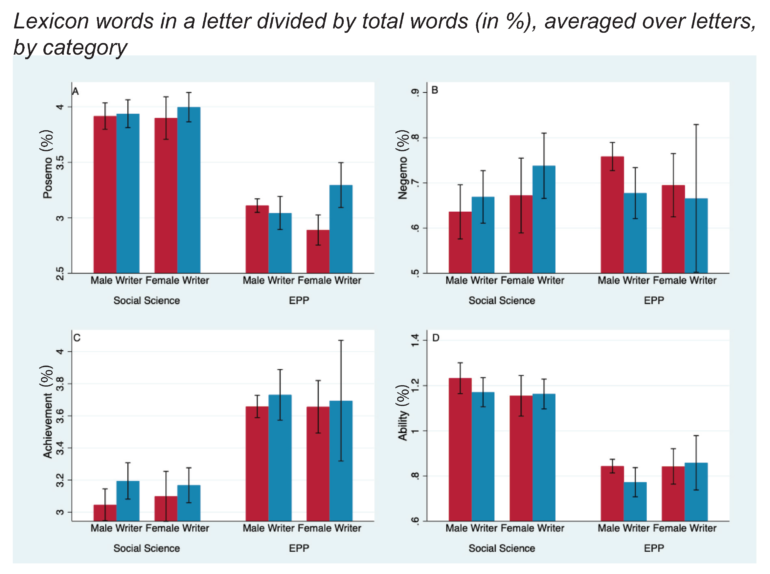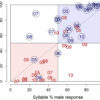New research from Washington University in St. Louis provides evidence that modern gender norms and biases in Europe have deep historical roots dating back to the Middle Ages and beyond, suggesting that DNA is not the only thing we inherit from our ancestors.
The findings—published on March 13, 2023 in the Proceedings of the National Academy of Sciences (PNAS)—highlight why gender norms have remained stubbornly persistent in many parts of the world despite significant strides made by the international women’s rights movement over the last 100-150 years.
Using dental records of more than 10,000 people from 139 archaeological sites throughout Europe, researchers found that individuals who live in areas that historically favored men over women display more pro-male bias today than those who live in places where gender relations were more egalitarian centuries ago—evidence that gender attitudes are “transmitted” or handed down from generation to generation.
These biases outlasted monumental socioeconomic and political changes such as industrialization and world wars. Researchers found one exception to the rule, however: In regions that experienced abrupt, large-scale population replacement—such as a pandemic or natural disaster—transmission of these values was interrupted.
“The median age of the skeletons in this study is about 1,000 years dating back to the medieval era. It is therefore remarkable that the patterns of gender bias that existed during those times and earlier are still replicated in contemporary attitudes,” said Margit Tavits, the Dr. William Taussig Professor in Arts & Sciences at WashU.
“Given the enormous social, economic and political changes that have taken place in Europe during this time, our findings speak to the power of cultural transmission of gender norms.”
The incredible stability of these norms over hundreds, if not thousands, of years also explains why it has been difficult in some regions to move the needle toward gender equality.
“There has been a widespread belief that gender norms are a byproduct of structural and institutional factors like religion and agricultural practices. Our findings draw attention to the fact that gender-equal norms passed down from one generation to the next can persist even if institutions or structures incentivize inequality, and vice versa,” Tavits said.
“For those working to foster gender equality, the message from our research is that rules and policies are not going to be enough to undermine deeply rooted sexist beliefs and sustain equal ones. We must also address the cultural forces channeling these beliefs.”
Taylor Damann and Jeremy Siow—doctoral students in the Department of Political Science at WashU—conducted research and co-authored the paper with Tavits.
About the research
Previous archaeological research has used linear enamel hypoplasias—permanent lesions on the teeth caused by trauma, malnutrition or disease—to analyze prehistoric gender equality. Because the lesions form exclusively in cases of sustained bodily stress, their presence or absence can tell researchers a great deal about the person’s health and living conditions. Further, differences between male and female teeth at the same location are an indication of which sex received preferential treatment in terms of health care and dietary resources at the time.
According to Tavits, studying gender norms in Europe is advantageous given the relative similarity of various institutional and environmental conditions across the region. This allowed researchers to control for factors that could affect modern gender attitudes, such as religion and political institutions.
Because differences in gender attitudes are fairly small across the continent, compared with the rest of the world, this setting also set a higher bar for detecting significant associations between historical and contemporary attitudes. Yet, time and time again, researchers found evidence of this association. For example, individuals living in an area that was historically egalitarian were 20% more likely to have pro-female attitudes than people living in areas that were historically the most pro-male.
Additional tests showed that historical gender bias failed to predict modern gender attitudes for immigrant populations. Researchers also found no evidence of historical gender bias impacting contemporary attitudes in areas hardest hit by the bubonic plague of the 14th century. Finally, they looked to the United States, where the arrival of European settlers in the 16th century led to large-scale displacement of Native Americans. Once again, they found no association between historical and current gender norms.
“Together, these findings provide further support for the idea that historical biases persist because they are passed down from one generation to the next and occur only when the transmission across generations is not interrupted. We were surprised that such a clear relationship emerged,” Tavits said.
A tale of two cities
In the paper, Tavits, Damann and Siow highlight two archaeological sites to illustrate how the contrasting historical treatment of women relative to men is reflected in current gender attitudes.
At the first site in Istria, a small urban Greek settlement on the Black Sea in the modern Dobruja region of Romania, researchers found evidence of a pro-male bias in historical dental records dating back to around 550 A.D. Out of the 49 skeletons for whom sex and dental information could be extracted, 58% of females show signs of malnutrition and trauma in their teeth, while only 25% of males do.
According to the authors, the status of men and women in society today has remained relatively unequal in the southeastern region of Romania, based on modern indicators of gender equality. For example, they note, only 52.5% of women participate in the labor market compared with 78% of men, and only 18% of the representatives in the modern municipal council are women.
The population’s beliefs about gender norms are similarly unequal, they write. More than half of the residents believe that men have more of a right to jobs than women and there is near consensus (89%) that a woman must have children to be fulfilled.
Contrast this with Plinkaigalis, a rural community in modern-day western Lithuania made up of a population of Balts. Unlike Istria, Plinkaigalis favored women’s health. Of the 157 skeletons at this site—also dating back to 550 A.D.—56% of males show dental signals of trauma and malnutrition whereas only 46% of females do. Separate studies have also found evidence that gender norms here were favorable to women.
In the modern era, this location, now called Ke ̇dainiai, remains relatively gender equal. Employment levels in western Lithuanian do not vary strongly by gender: 76% men vs. 72.7% women. And women are nearly proportionally represented in local politics (48%). Likewise, less than a quarter of residents of the modern location believe men have more of a right to a job than women, and 56% believe women need children to be fulfilled.
“In sum, the parallels between historical and modern gender norms at both of these locations are stark and in line with our argument about persistence,” the authors wrote. “The male preference at Istria, dating back at least to the early medieval era, is still reflected in unequal gender relations today. The area around pre-medieval Plinkaigalis, on the other hand, continues to treat men and women with relative equality as (according to skeletal records) it did about 1,500 years ago.”
More information:
Damann, Taylor J. et al, Persistence of gender biases in Europe, Proceedings of the National Academy of Sciences (2023). DOI: 10.1073/pnas.2213266120. doi.org/10.1073/pnas.2213266120
Provided by
Washington University in St. Louis
Citation:
Research highlights gender bias persistence over centuries (2023, March 13)



